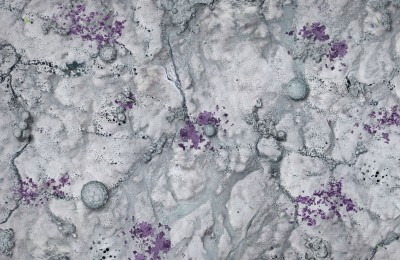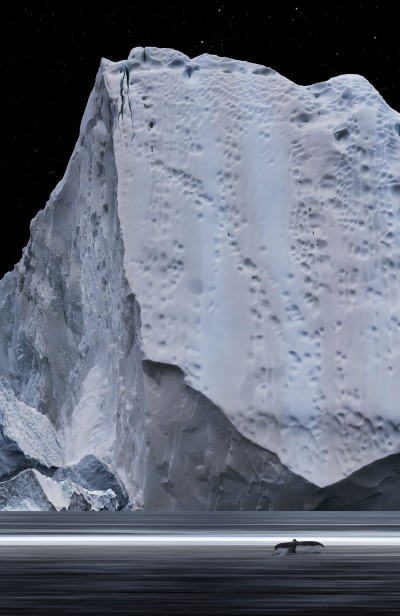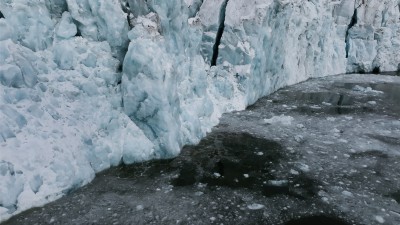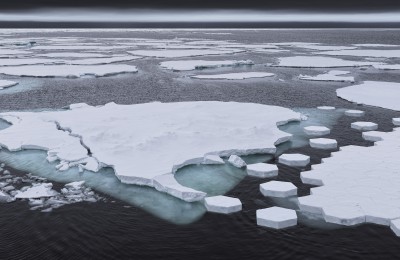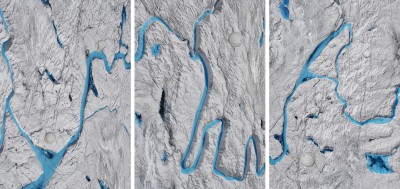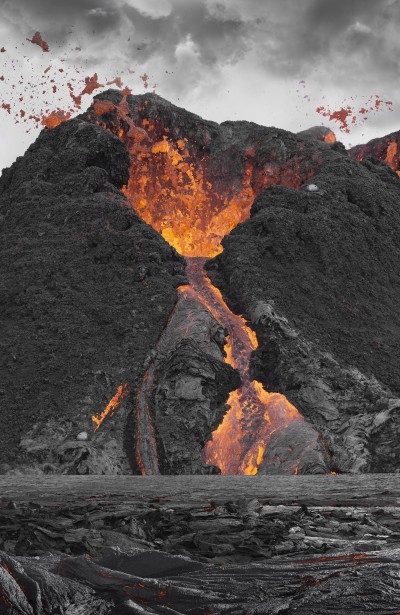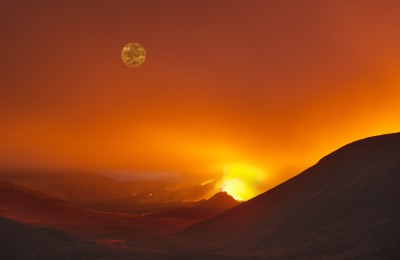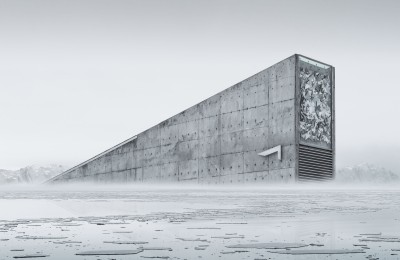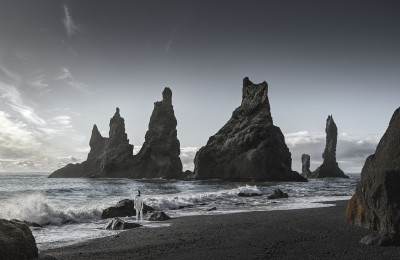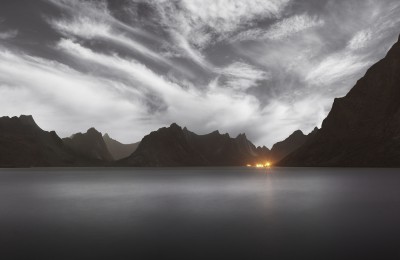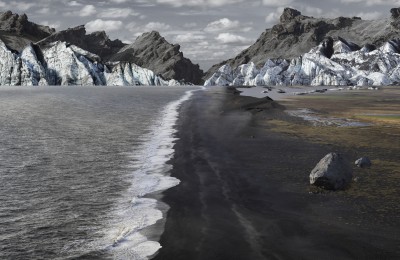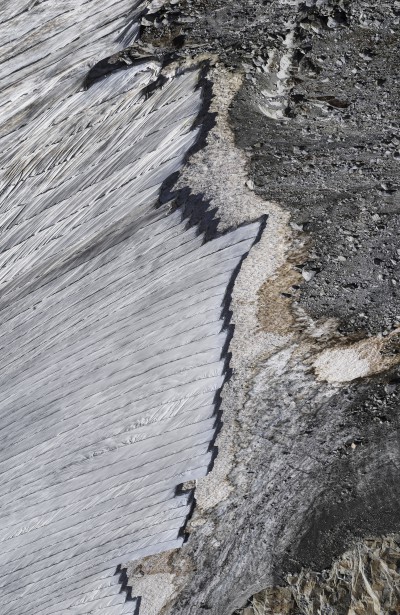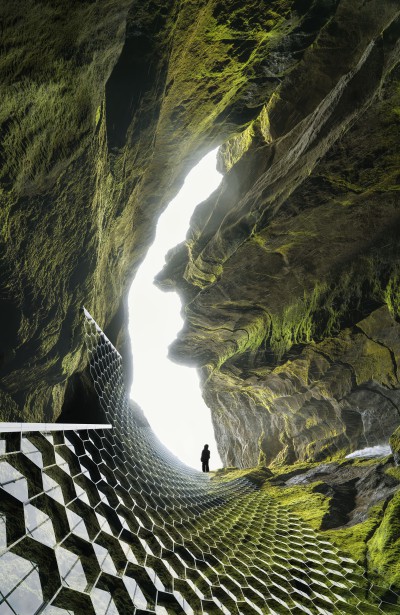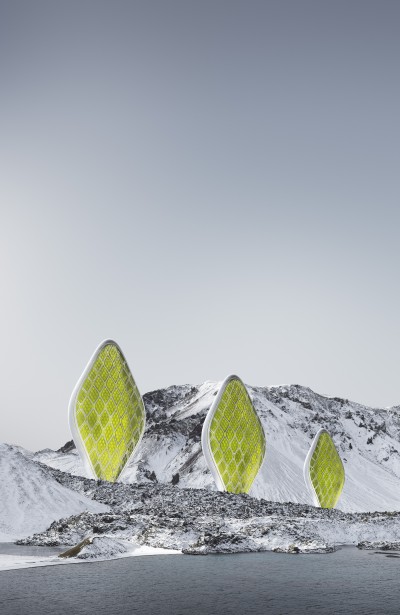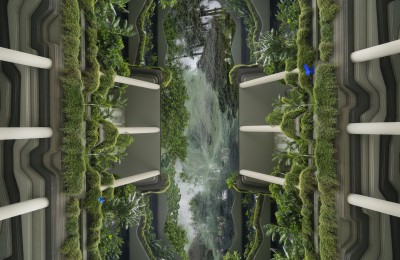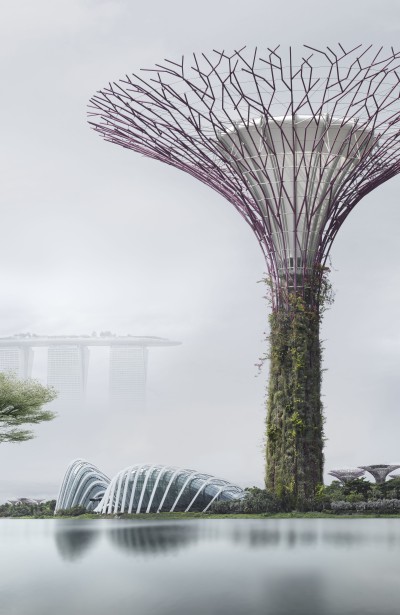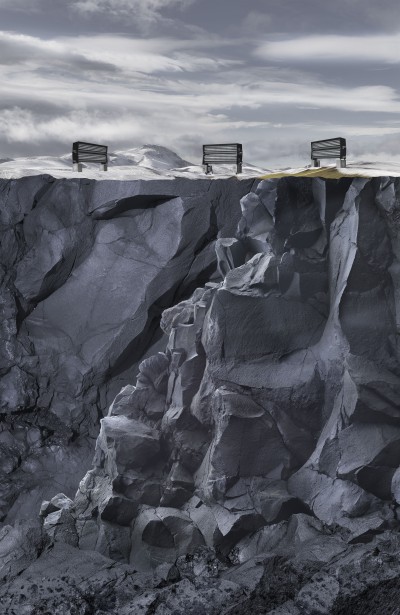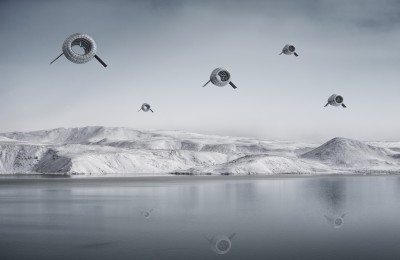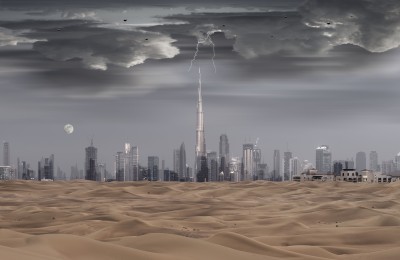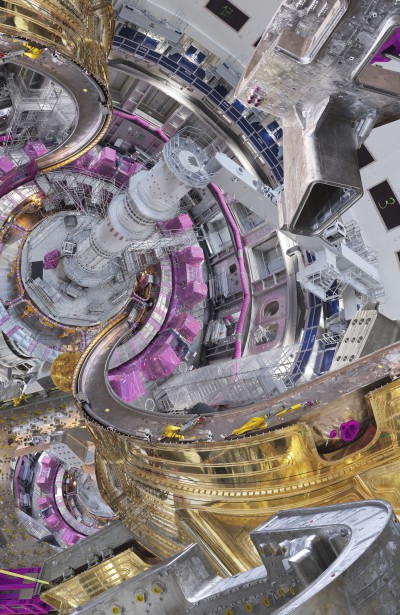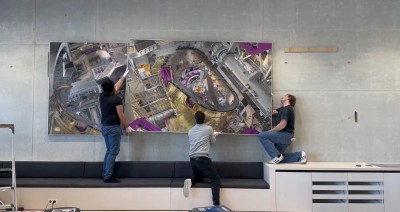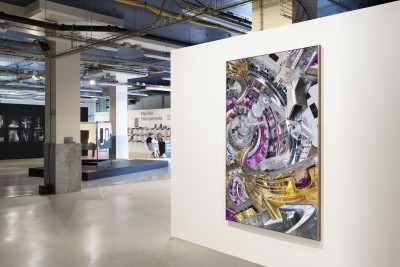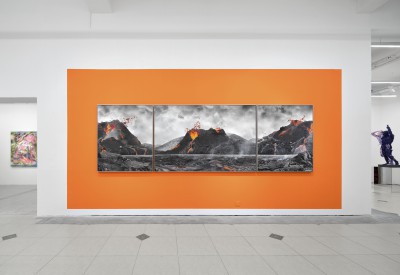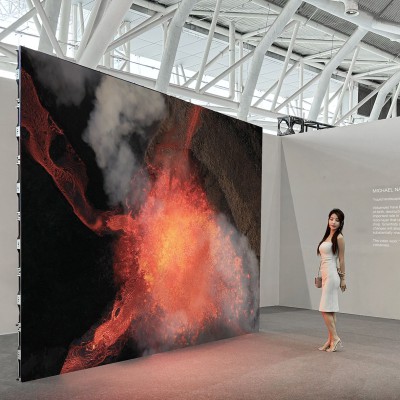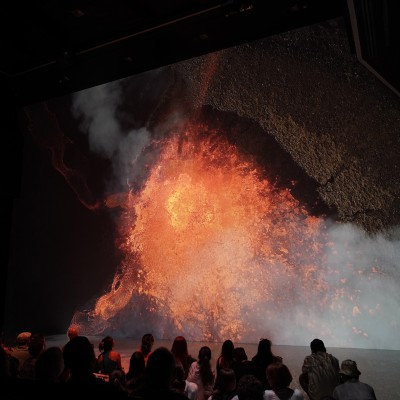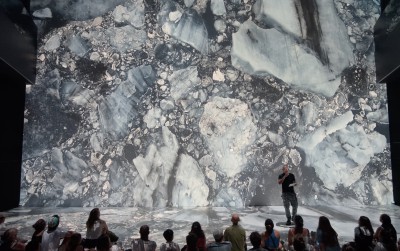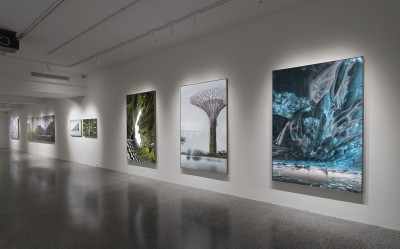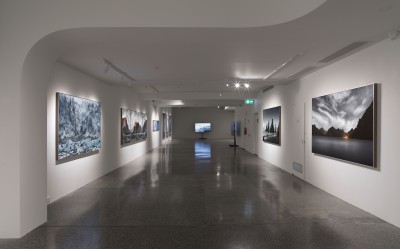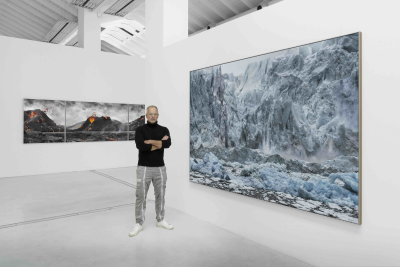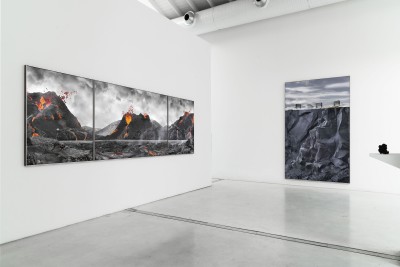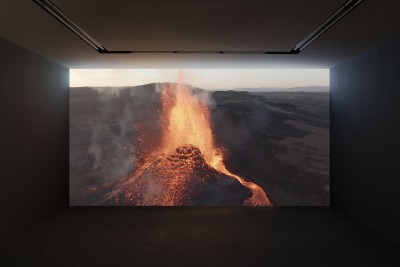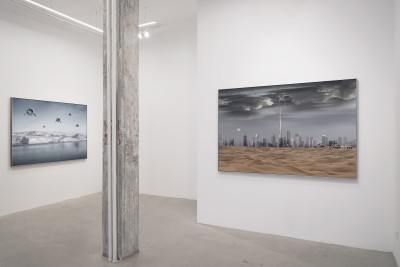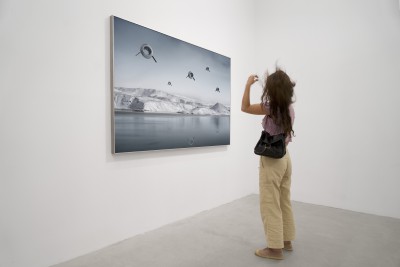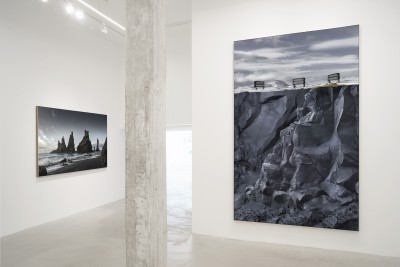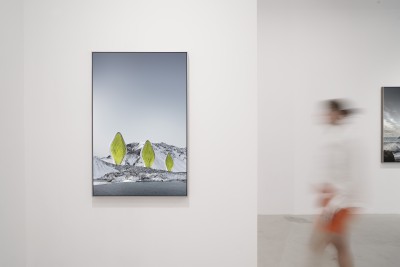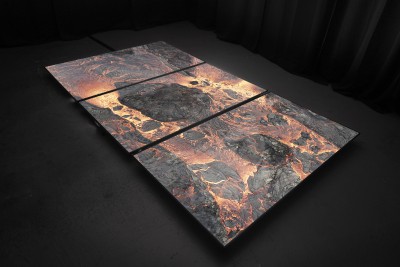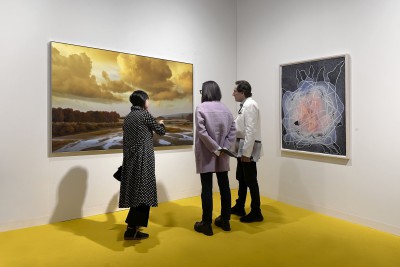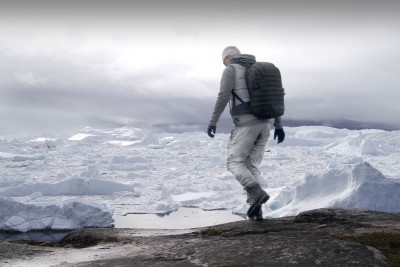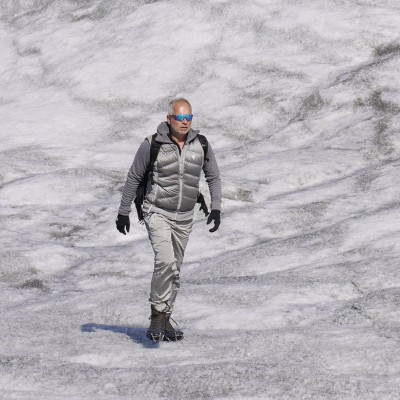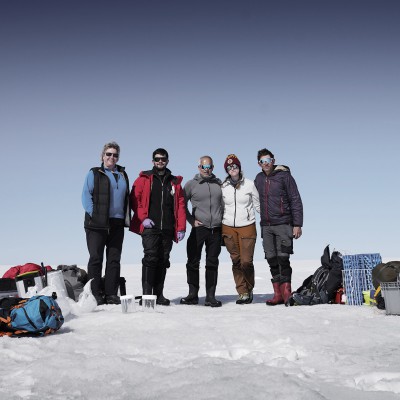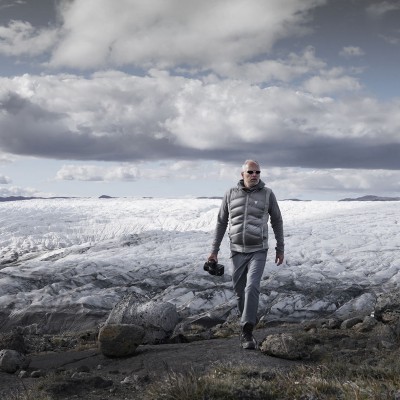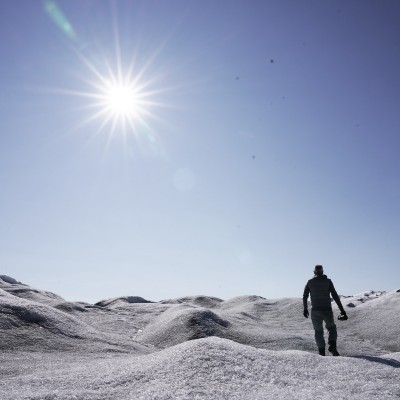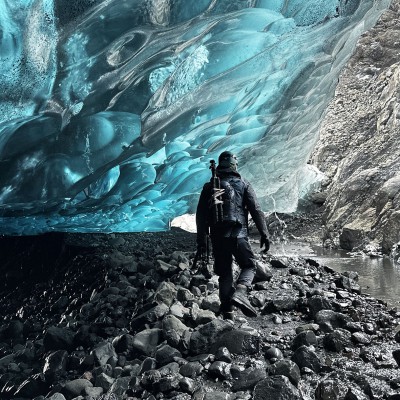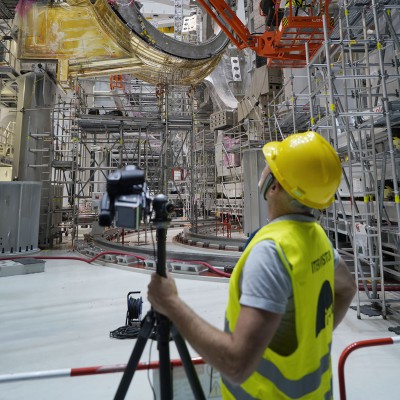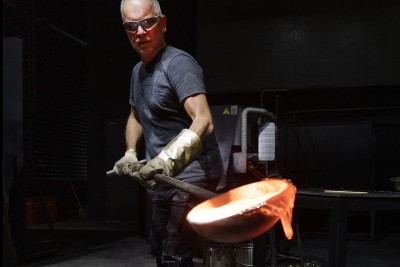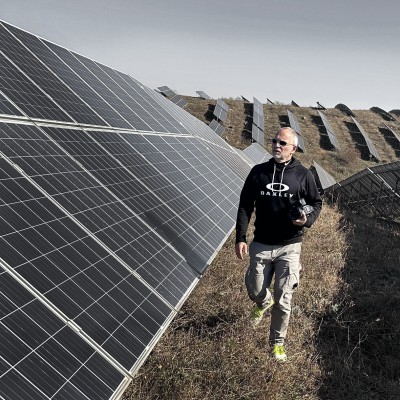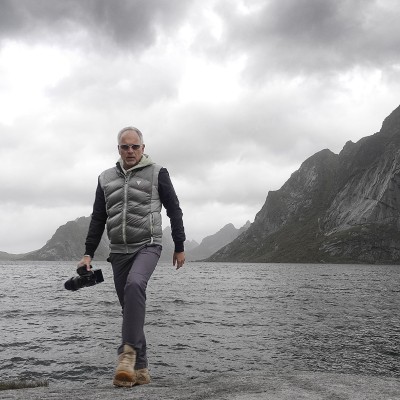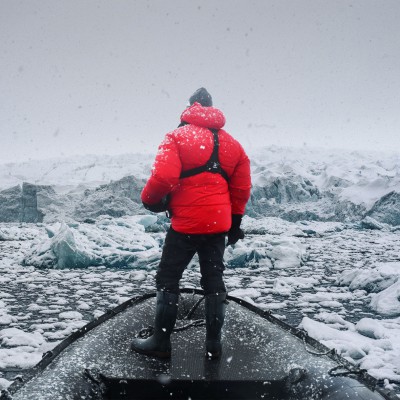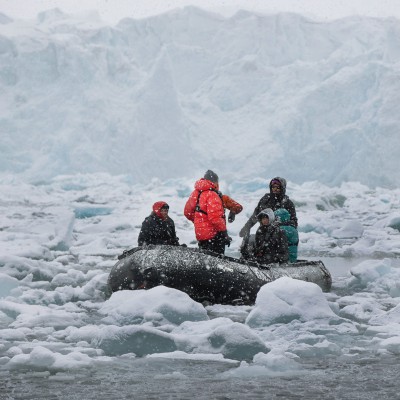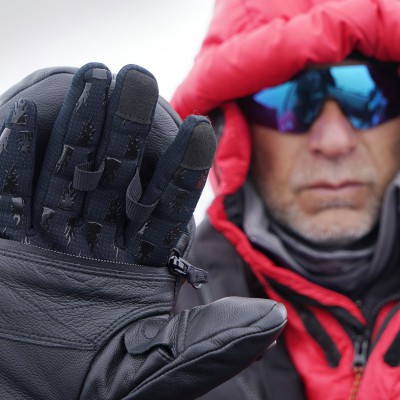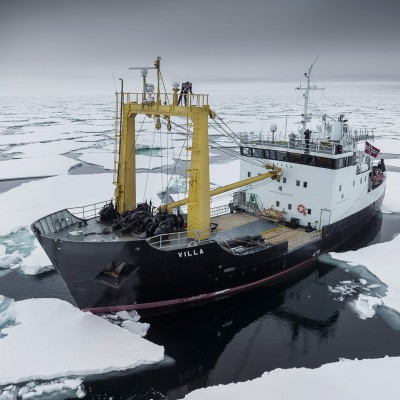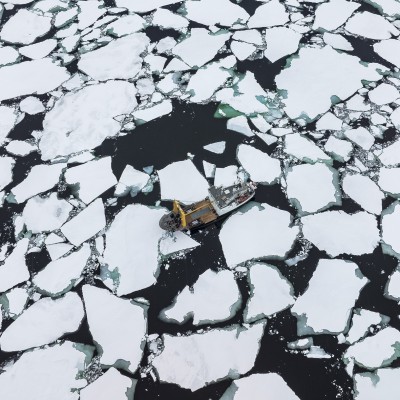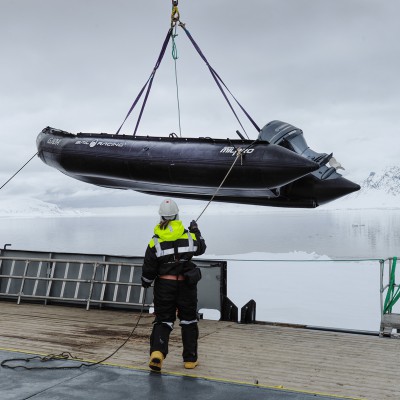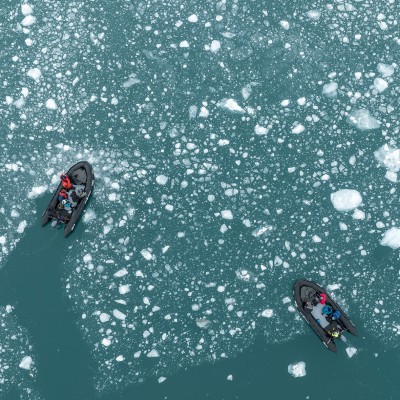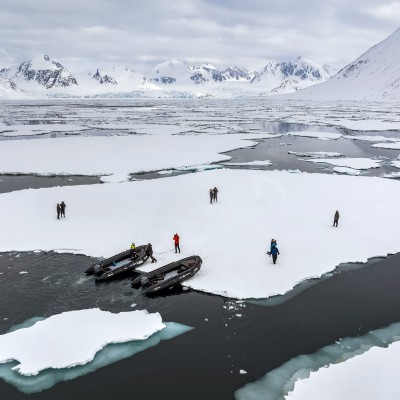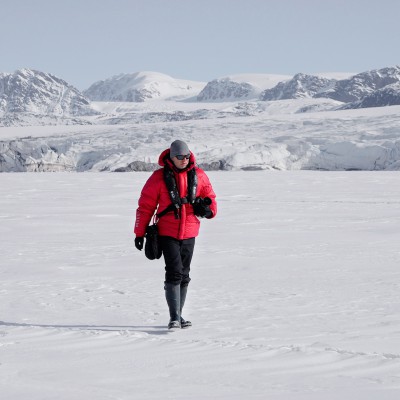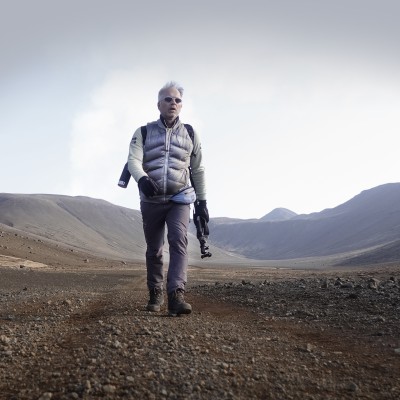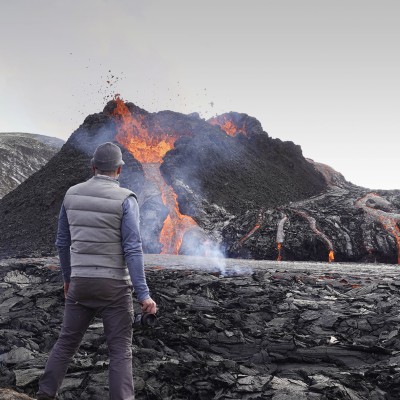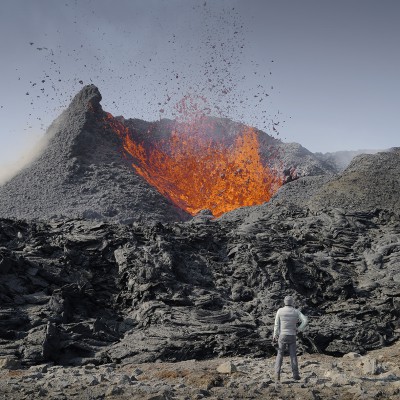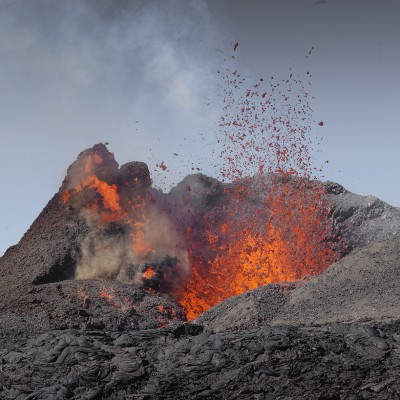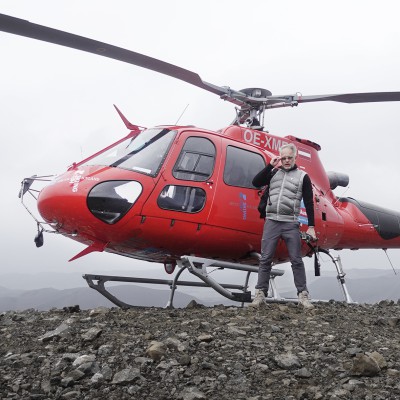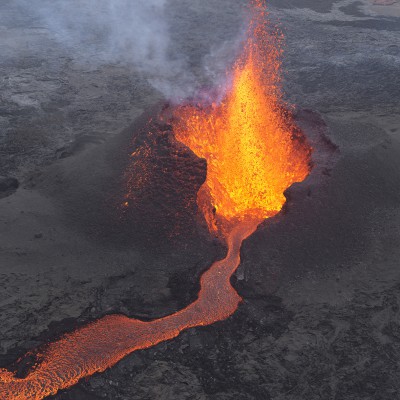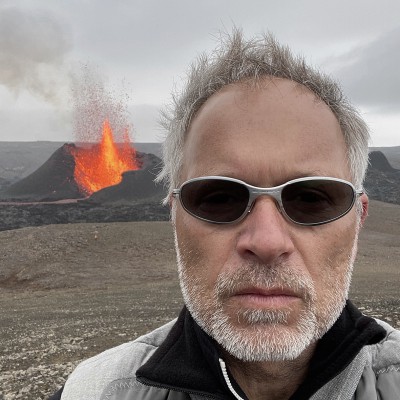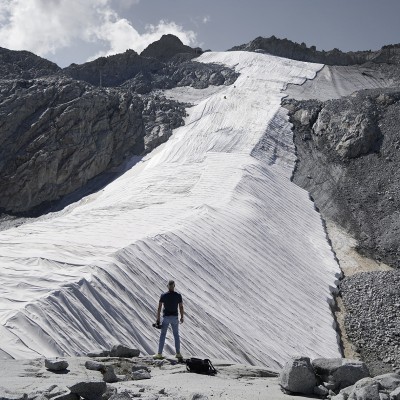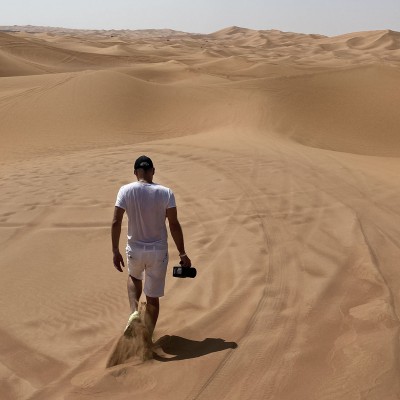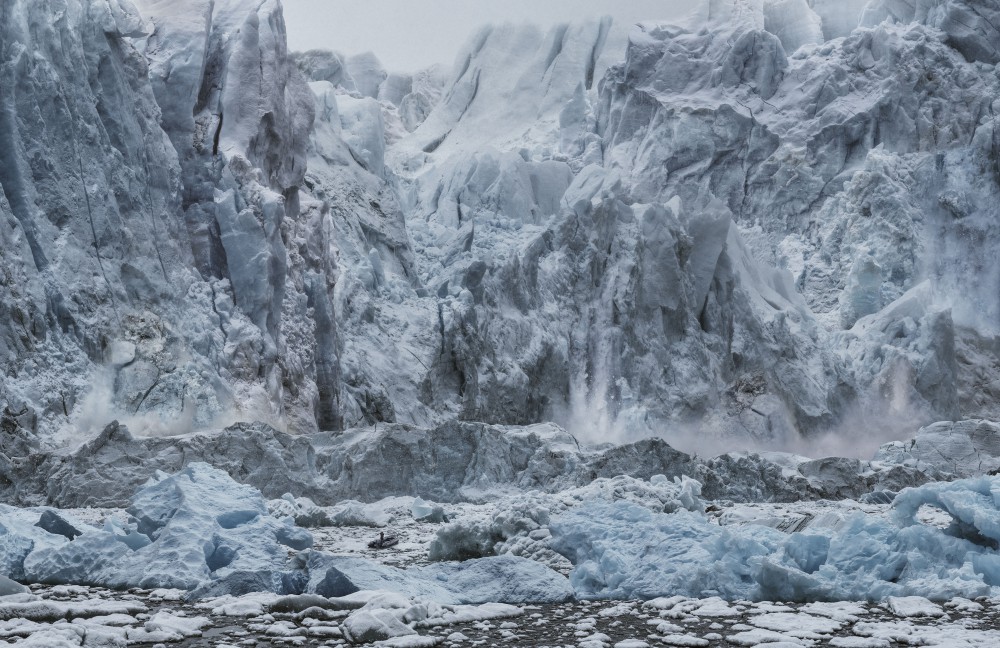
arctic elegy
Format 1: 132 x 202 cm / 52 x 79.5 in, edition of 6 + 2 AP
Format 2: 67 x 102 cm / 26.3 x 40.2 in, edition of 6 + 2 AP
Hybrid photography, archival pigment print, aludibond, diasec, custom-made wood / aluminium frame
The Arctic is warming twice as fast as the rest of the world. Almost everything in the Arctic from ice and snow to human activity is now changing so quickly that in 20-30 years nothing will be the same as it is today. With the current melting of sea ice and the collapse of Arctic glaciers, our past is also melting away while at the same time our future is being shaken. We are facing very real and immediate threats to the entire planet from climate change to collapsing ecosystems. The warming of the Arctic is causing glaciers to melt, sea levels to rise, weather catastrophes, geopolitical upheaval, species extinction, and the disappearance of cold-based cultures and traditions. By the middle of this century, the North Pole will most likely be completely ice-free during the summer months. Some countries have a great interest in such change as it means that new transit and trade routes are will emerge and new access to previously inaccessible fossil resources is opening up. We must ask ourselves what if Arctic warming, thawing, melting and the other changes reflect future global environmental changes? What if the instability of the Arctic affects society as a whole and is a precursor of dramatic change: cities made uninhabitable by heat, sunken cities across the whole world, extinct species, lost cultures, massive numbers of climate refugees?
Despite its aesthetic beauty, the artwork “artic elegy” paints a rather threatening picture with regard to the future changes in the world caused by the consequences of climate change. We are in transit between ecotopia and dystopia. In May 2022 Michael Najjar went on an Arctic expedition to the polar pack ice and glaciers of Spitzbergen. From a dinghy he took photos of the colossal Lilliehöökbreen glacier during an Arctic snowstorm. The picture shows a state of serious instability. The huge glacier wall is in the process of collapsing, a lone small rubber dinghy with one person standing in it is in danger of being swallowed up by the falling masses and floating blocks of ice. The midnight sun bathes the scene in an unreal light. Humans seem helpless in the face of the forces they have set in motion. We know that the preservation of our planet in its present state of equilibrium depends on the ice sheets in the polar regions. Once a tipping point is passed, it is too late. To avoid triggering dangerous tipping points as the Earth’s response to the tremendous impact of humankind, we need to combine our scientific understanding of the biophysical limits of the Earth with transformative and sustainable technologies. Otherwise, we shall never reach the saving shore.
